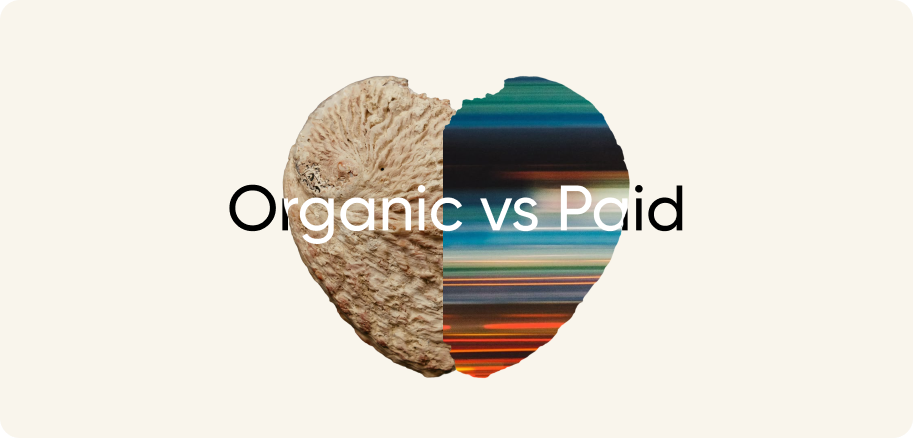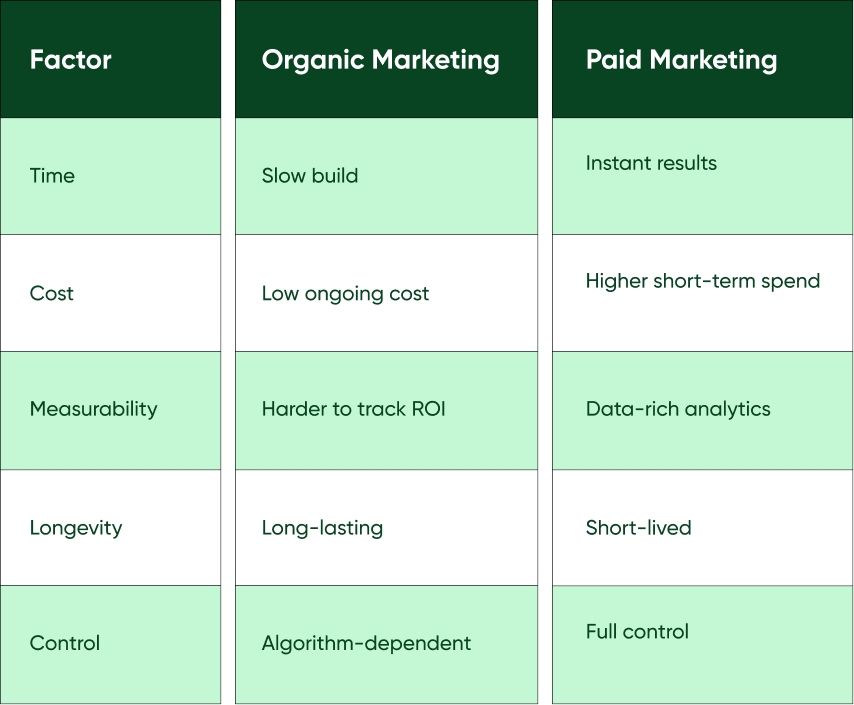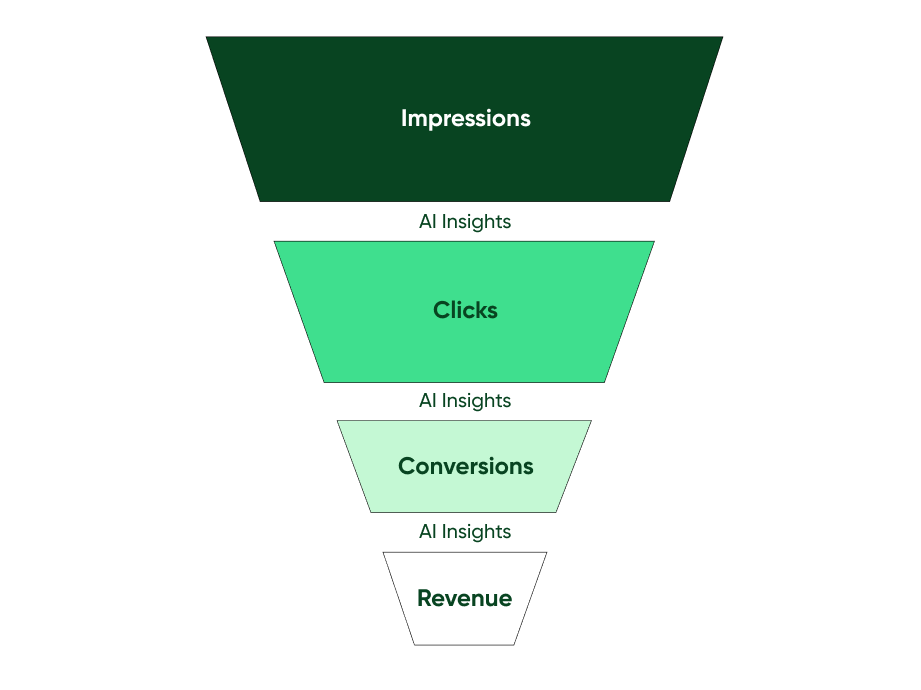Informative
November 24, 2025


It’s the age-old question: should you grow your audience organically or pay to play?
In digital marketing, the debate between organic and paid marketing continues to shape strategy conversations across every industry. Organic marketing focuses on building long-term brand equity through valuable content, community, and trust. Paid marketing, on the other hand, delivers instant visibility, targeted reach, and measurable results.
Both serve different roles within a modern digital marketing strategy. Organic builds foundations that last, while paid helps accelerate growth when speed matters. The key is understanding how these two forces work together to create sustainable, scalable success.
This guide explores organic vs paid marketing in depth, breaking down how each performs, where they differ, and why the most effective brands in 2026 use both to win.
Organic marketing is the art of earning attention. Through content, SEO, social media engagement, PR, and community building. It’s how brands grow credibility and attract traffic naturally over time.
Paid marketing, meanwhile, is the science of buying visibility think PPC campaigns, paid social, programmatic ads, and sponsorships. It’s fast, measurable, and perfect for targeted reach.

Think of organic as planting a forest, slow but sustainable. Paid is renting a billboard — visible today, gone tomorrow.
Organic marketing is the foundation of sustainable brand growth. It focuses on attracting and engaging audiences naturally through valuable content, search visibility, and community connection. Instead of relying on paid placements, brands earn attention by being discoverable, relevant, and consistently useful. The goal is to build trust and authority over time, creating a steady flow of inbound interest that compounds in value.
The compounding effect of SEO and content means your investment keeps paying off. One high-performing blog post can drive traffic for years, fuelling your authority and organic reach. Check out this example by Ahrefs to see how they earned One Million Dollars From One Article.
Consumers trust what they discover more than what they’re sold. As the saying goes: “People buy from people, not pixels.” That’s the magic of organic social media marketing.
It may take time to gain traction, but once momentum builds, your content library generates leads on autopilot, a gift that keeps giving.
Organic is the heartbeat of community building. It keeps your brand in conversation, turning casual followers into loyal advocates.
Deciding when to prioritise organic efforts often comes down to timing and goals. For example, in the case of SEO vs. PPC, a brand launching a new product might use PPC (Pay-Per-Click ads) to gain quick awareness or leads, while continuing to invest in SEO to build sustainable visibility for the long term and build domain authority. Both serve different roles, but together they form a balanced ecosystem: one focused on immediate reach, the other on ongoing discovery and trust.

Paid marketing focuses on speed, precision, and measurable impact. Instead of waiting for organic reach to build, brands use paid channels to reach their target audience directly. This includes PPC (pay-per-click) ads, paid social campaigns, programmatic display, and sponsorships. A well-planned paid advertising strategy allows marketers to test messages quickly, scale what works, and generate results in real time.
Unlike organic marketing, where visibility depends on algorithms and consistency, paid activity gives brands full control over placement, timing, and spend. That control makes it ideal for launches, seasonal promotions, and campaigns where timing and volume matter most.
Paid campaigns deliver results almost immediately. Whether it’s a product launch, event registration, or limited-time offer, ads can put your message in front of the right audience within hours. This immediate visibility makes paid activity a valuable lever in a wider digital strategy.
Platforms like Google Ads, Meta, and LinkedIn allow advertisers to define audiences by demographics, interests, and behaviours. With lookalike modelling and retargeting tools, paid marketing ensures that spend goes toward the people most likely to engage or convert.
Every click, impression, and conversion can be tracked. Marketers can monitor key metrics such as CPC (cost per click), CTR (click-through rate), ROAS (return on ad spend), and CPA (cost per acquisition). This data feedback loop allows for continuous optimisation and precise budget management.
Paid campaigns offer scalability when organic performance plateaus. By increasing spend or expanding targeting, brands can grow reach and conversions in a controlled, data-led way. It’s a key reason many partner with a performance marketing agency to ensure paid efforts deliver maximum ROI.
Paid marketing could never really replace organic marketing (as we’ve seen, they both play different roles), but it does amplify it. For example, insights from paid campaigns can inform future content strategy, while high-performing organic assets can be boosted through paid promotion for wider exposure. The most effective brands use both strategically.
Organic marketing performs best where credibility, depth, and long-term audience relationships are key. It may take longer to grow, but it builds the kind of trust that even the most advanced automation can’t imitate.
Here’s where organic wins:
The AI angle
AI tools now support organic efforts by streamlining keyword research, content optimisation, and audience insight, but the substance still relies on human voice and trust. That’s why brands with strong organic foundations remain resilient, even as algorithms and technologies evolve.
Paid marketing excels when speed, scale, and measurable performance are the priority. It’s designed for brands that need quick results, flexible control, and clear data on what’s working.
Here’s where paid wins:
The AI angle
AI has made paid media smarter, not easier. Automation helps optimize bidding and targeting, but strategy still determines success. The best paid advertising strategy uses automation for efficiency while keeping human creativity and decision-making at the centre.
.png)
The real advantage doesn’t come from choosing sides but from combining strengths. When organic and paid work together, brands build visibility, trust, and performance that neither can achieve alone. Organic attracts attention naturally, while paid accelerates it to scale.
Here’s how integration creates impact:
When used together, organic and paid form a continuous loop: organic builds the brand story, paid ensures it’s seen by the right people at the right time. The outcome is a more resilient, balanced digital marketing strategy for 2025, one that grows visibility today while securing authority for the future.
Creating the right balance between organic and paid marketing isn’t about equal budgets or airtime, it’s about rhythm and timing. Each channel plays a specific role, and success comes from knowing when to let one lead and the other support.
A practical framework for balance:
As team wonderwork says, organic builds trust; paid buys time. When combined with clarity and intent, they form a marketing engine that performs with both authenticity and precision.
At wonderwork, we act as the extension of our clients’ marketing team This means we look at marketing holistically, combining creative storytelling with data-led precision.
Audience insights, search behaviour, and engagement trends shape content that earns attention organically, then performs consistently across campaigns. Every paid initiative builds on what’s already working, ensuring media spend is efficient and purposeful.
Human creativity drives the story, while analytics and optimisation keep performance sharp. Our teams track how both sides influence each other in real time, adjusting content, targeting, and creative to maximize results.
This balance is what defines wonderwork as a performance marketing agency. Clients have seen tangible outcomes
Read the Egg case study to see how we achieved a 150% week-over-week conversion increase.
In the end, there’s no single winner in the debate of organic vs paid marketing. Each plays a different role in building a brand that lasts.
The smartest brands in 2025 aren’t choosing one over the other. They’re combining both to build sustainable growth: using organic channels to attract and engage, and paid campaigns to amplify what works. Together, they form a complete digital marketing strategy that balances reach with relevance.
At wonderwork, we help brands design systems that do both beautifully. Whether it’s optimising for search, crafting standout creative, or managing performance campaigns, our focus is always on measurable growth and meaningful connection.
If you’re ready to build a marketing engine that performs on every level, let’s talk.